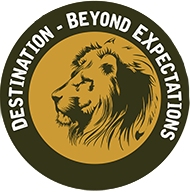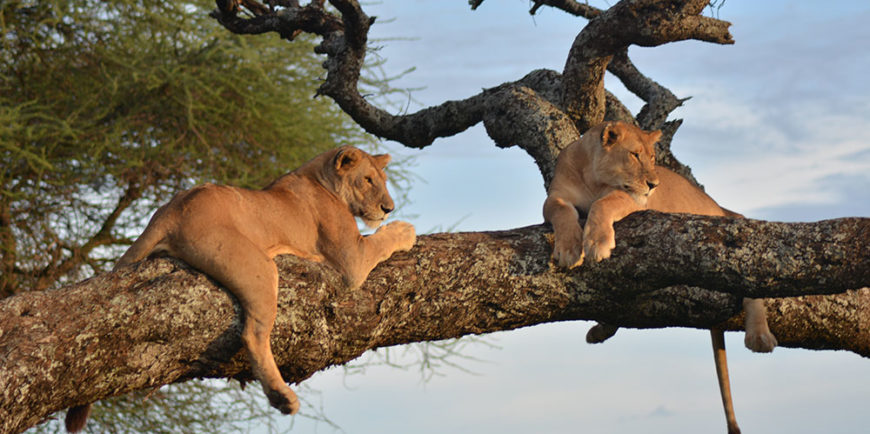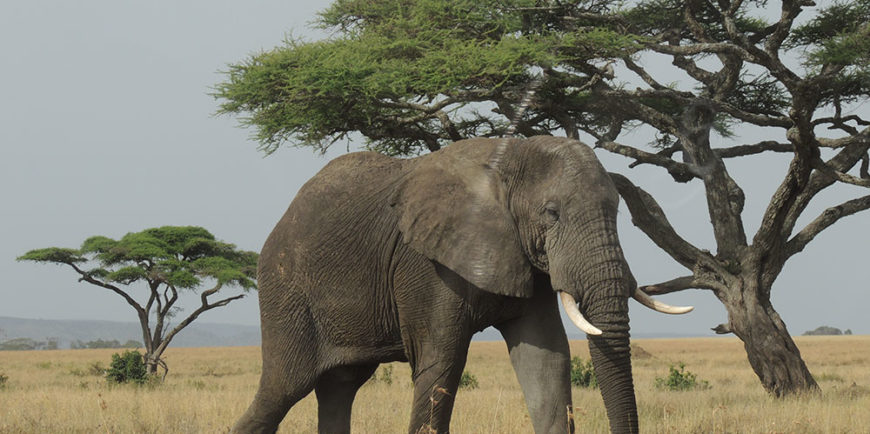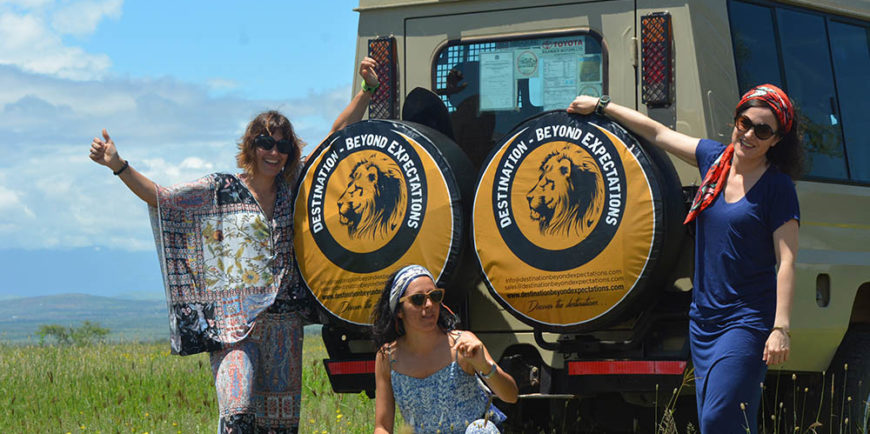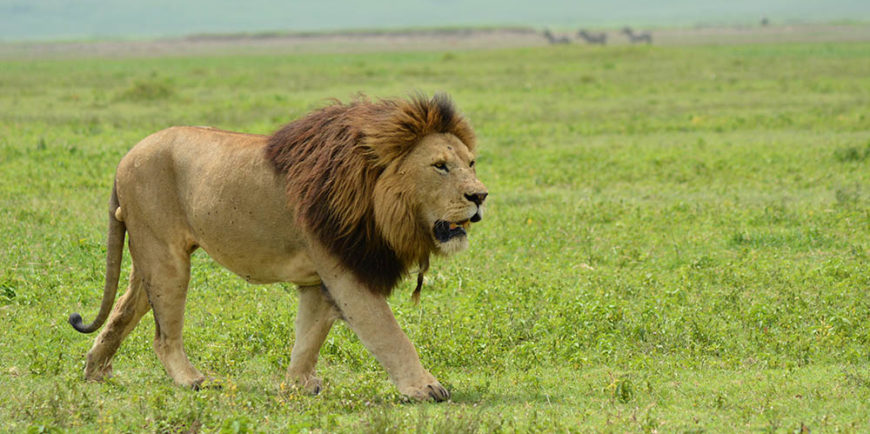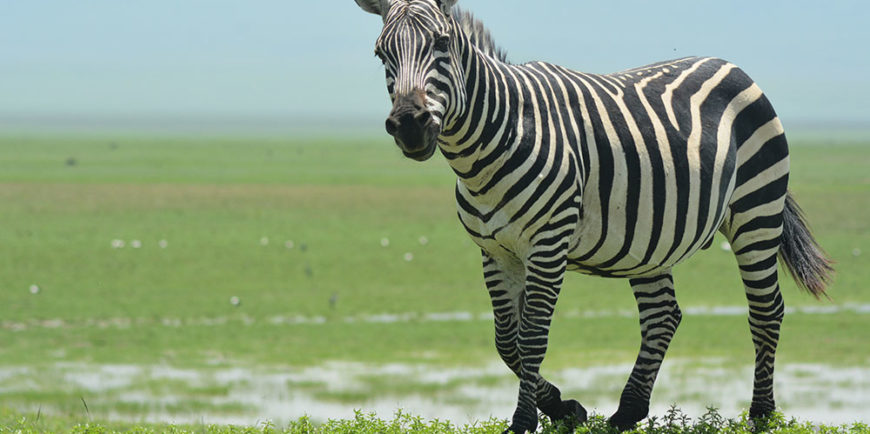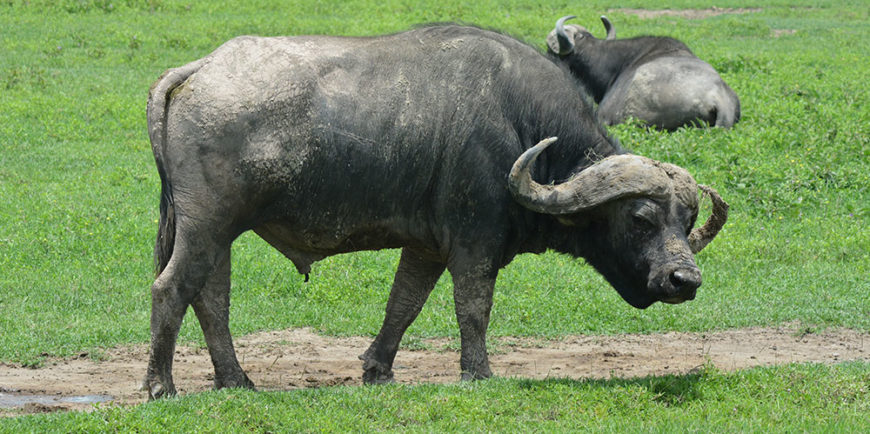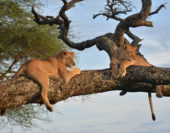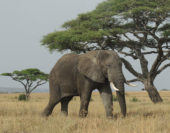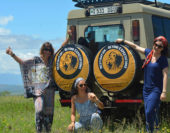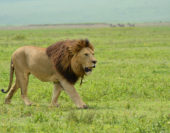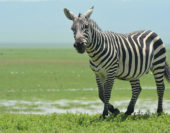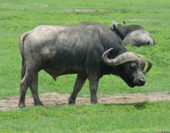BOOK THIS TOUR
Day 1
Arrival at Kilimanjaro airport overnight in Arusha (New Arusha Hotel, Lake Duluti Serena Hotel, Mt. Meru Hotel, Planet Lodge).
Day 2
Full day in Arusha sightseeing Museum, local market , visit coffee farms these are small scale farmers who own small pieces of land and locally process the coffee, Green vegetable garedens at Ilkidinga these are full day activities in Arusha . Have picnic lunch on one of the sites, dinner and overnight at the hotel.
Day 3: Depart from Arusha to Lake Manyara National Park
The compact game-viewing circuit through Manyara offers a virtual microcosm of the Tanzanian safari experience. Manyara provides the perfect introduction to Tanzanian’s birdlife. More than 400 species have been recorded; even a first-time visitor to Africa might reasonably expect to observe 100 of these in one day, including thousands of pink-hued flamingos, Pelicans, andStokes. The park famous for tree climbing Lions depending on the season of the year, Migratory Elephants between Manyara and Tarangire, Cape Buffaloes, Hippos,m apes such as ,Baboons, Bluemonkeys, andvervet monkeys, Giraffe , Impala. Afternoon drive to Shangrila coffee plantation, this is a big coffee plantation with modern machines for coffee processing.
Size: 330 sq km (127 sq miles) of which up to (77 sq miles) is a lake when water levels are high.
Location: In northern Tanzania, the entrance gate lies 1hr 30min (126km/80miles) west of Arushaclose to the ethnically diverse market town of MtowaMbu.
To do:Game drives, canoeing when the water levels is sufficiently high. Walking along paddy (Rice) farm these are small scale farmers using irrigation scheme, Cultural tours, mountain bike tours, abseiling and forest walks on the escarpment outside the park.
Best time:Dry season (July-October) for large mammals; wet season (November-June) for bird watching, visit the waterfalls and canoeing.
Accommodation: One luxury Lodge Serena Manyara,Kirurumu Tented lodge, Gibbs Farm Olea Africana camp, public bandas and campsites inside and outside the park.
Day 4, 5&6: Depart to Serengeti National Park.
Tanzania’s oldest and most popular national park, the Serengeti is famed for its annual migration, when some six million hooves pound the open plains, as more than 200,000 Zebra and 300,000 Thomson’s gazelle join the wildebeest’s trek for fresh grazing. Yet even when the migration is quiet, the Serengeti offers arguably the most astounding game-viewing in Africa. The book Serengeti shall never die proves this beyond no doubt; the eco system of Serengeti from Gnus,Zebra,and Predators to dung beetles enhance the food chain! Southern Serengeti, in short plain grass is the home for birthing of Gnus. Short plain grass is rich in minerals and salts for newly born, end of February–March is when Gnus deliver new babies depending on availability of grass and water. If conditions are not favorable then pregnancies can be carried for 2 more months.
Size: 14,763sq km (5,700 sq. miles).
Location: 335km from Arusha, stretching north to Kenya and bordering Lake Victoria to the west
Getting there: Scheduled and charter flights from Arusha, Lake Manyara and Mwanza or drive from Arusha, Lake Manyara, Tarangire or Ngorongoro Crater.
To do: Hot air balloon safaris, Visit neighboring Ngorongoro Crater, Olduvai Gorge, OlDonyoLengai volcano and Lake Natron.
Accommodation: central Serengeti Chak Tented lodge, Serena Serengeti, Sopa Serengeti, Katikati Luxury Tented lodge, Seronera Wildlife lodge / Camping. Southern Serengeti / Ndutu Area accommodation Ndutu Safari lodge, Lake Masek Tented luxury lodge, Savanah Tented Camp, Mbugani Tented Camp.
Day 7&8: After breakfast drive to Ngorongoro Conservation Area Authority
Ngorongoro is the world’s largest intact volcanic caldera, and its 304 sq km floor is the ultimate ‘Big Five’ destination, home of elephant, lion, leopard ,Black rhino, buffalo and others, the caldera holds over 25000 different species of animals, two main geological rifts through the area, Oldupai Gorge &Laitoli Foot Prints. Nine volcanoes in the Ngorongoro highlands were formed during the past 4 million years. One of these, OldoinyoLengai is still active.
Size: 8288 sq km (3,200 sq miles)
Location: 180 km (112 miles) west of Arusha in the Crater Highlands area of Tanzania.
Getting there: The road from Arusha to the eastern entrance gate of the NCA via Makuyuni, MtowaMbu and Karatu is tarmackedand the trip can be covered comfortably in less than three hours, with another 30-60 minutes required to get to any of the lodges.
To do: Game viewing (and photography) enhanced by the striking backdrop of 600m-high crater wall, Cultural tours, visit to Oldupai Gorge, this is a historical site where the fossils of Hominid where found by Dr. Leakey in 1959.It is believed that the first upright man lived in this place.
Despite the fossils, the museum has a lot to see such asfoot prints of upright man discovered at Laitoli,Stone Age tools, old animal bones and horns.
Accommodation: In Karatua town before the entrance gate– Gibbs Farm,Bougainvillea, Tloma, Ngorongoro Farm House, Ollea Africana, or Mobile Camp. In the conservation area world-class game lodges perch grandly on the south-western crater rim such as Serena Ngorongoro, SopaNgorongoro,Ngorongoro Wildlifelodge,Ngorongoro Crater lodge,Ngorongoro Farm House, Valley Farm House and a public campsite- Simba.
Best time: Game viewing in the crater can be enjoyed, any time of the year. The wildebeest migration is in the NCA over December– April, calving January – February. For birders, November – March is best for Palearctic migrants.
Day 9: Depart for MaasaiBoma/Laiboni
This is a medicine man who uses herbs from trees, grass, flowers to treat different diseases on adults and Children, Maasai people are Nilotic, Pastoralists/Nomads who migrated from Egypt following the Nile River basin with their animals. Maasai believe that all domestic animals belong to them.
This tribe practice norms, traditions and culture such as circumcision for boysage 10 to 14 without anesthesia neither stitches.Meat eating ceremonies whereby after slaughtering a big bull blood mixed with fresh milk and local alcohol will be taken by the elders –Men while fresh.Maasai men are polygamist, the more cattle, sheep and goats a man owns the more wives he can marry, clients will have a chance to see their life style,original maasai huts, dancing, live slaughtering and a test of barbequed goat meat.
Day 10: TARANGIRE NATIONAL PARK
Herds of up to 300 elephants scratch the dry river bed for underground streams, while migratory wildebeest, zebra, buffalo, impala, gazelle, hartebeest and eland crowd the shrinking lagoons. It’s the greatest concentration of wildlife outside the Serengeti ecosystem – a smorgasbord for predators-and the one place in Tanzania where dry-country antelope are observed ,decorated by over 250 years old Gigantic Baobab Trees
Size: 2,600 sq km (1,005 sq miles)
Location: 118km (75miles)southwest of Arusha
Best time: Year round but dry season (June – September) for sheer numbers of animals.
Accomodation: TarangireSopa lodge, Chemchem Lodge, Tarangire tree tops lodge,Olivers Camp, Maramboi tented camp.
Day11
Early morning game drive, after brunch game drive, afternoon drive to Arusha, shopping en route, dinner and overnight Arusha hotels as day1
END OF SERVICE


